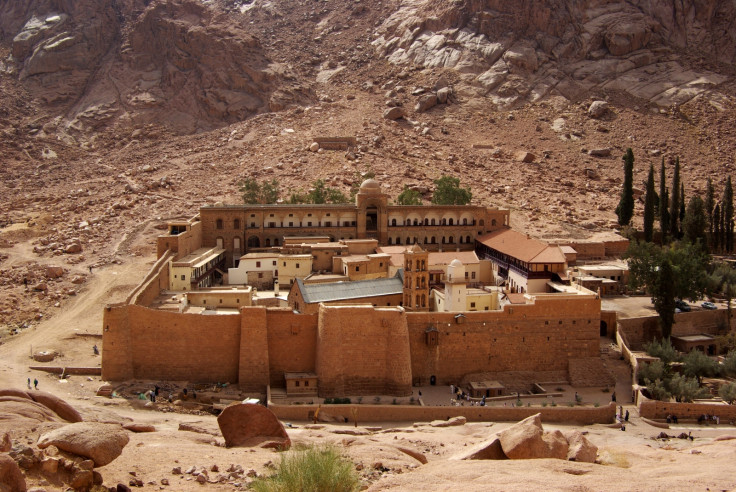Monks unearth 1,500-year-old manuscript by 'father of medicine' Hippocrates in ancient Egypt
The discovery was made during restoration works at Saint Catherine Monastery.

In the southern Sinai peninsula, at the foot of Mount Sinai, the Saint Catherine Monastery stands as one of the oldest Christian monasteries in the world. Recent restoration work inside the majestic building has revealed a 1,500-year-old manuscript that contains an ancient medical recipe derived from the research of the famous Greek physician Hippocrates.
The discovery was announced during a ceremony in which Egypt's Minister of Antiquities Dr Khaled El-Enany received the Greek minister of digital policy, telecommunications and media, Nikos Pappas.
The manuscript had remained hidden in the monastery's library for centuries until it was rediscovered by the monks during restoration and documentation work.
According to Dr Mohammed Abdel-Latif, who is Egypt's assistant minister of antiquities for archaeological sites, this is a type of manuscript knows as 'Palmest manuscripts'.
These manuscripts were written on leather, and two layers of writing can be deciphered. Due to the high cost of producing leather, the first text that was written on the manuscript was indeed partly erased after some time to make room for a second layer of text.
This specific manuscript dates back to the 5th or 6th century CE. Parts of medical texts associated with the medical research of the renowned Greek physician Hippocrates appear on the pages.
Hippocrates lived in Ancient Greece between 460 BCE and 375 BCE, on the island of Cos. He is perhaps the most famous doctor in history and is even traditionally regarded as the father of medicine. A lot of myths surround Hippocrates, so it is difficult to know exactly what is true about his life, but about 60 medical writings have survived that bear his name. It is believed however that most of were not written by him, including the famous Hippocratic Oath.
This ethical code of conduct adopted by doctors is still used in the graduation ceremonies of many medical schools. At the time of Hippocrates, new physicians swore upon a number of healing gods to do their job adequately and ethically.
Even if Hippocrates didn't write the oath, he was revered for his ethical standards, so it makes sense that it would be attributed to him.
On the newly discovered manuscript, three other medical texts can also be seen, although little is known about their origin. They are accompanied by drawings of medicinal plants. The second visible layer of writing on this manuscript is a text of the Bible known as the Sinaitic manuscript.
Beyond this manuscript, Saint Catherine Monastery is known for the great amount of ancient literature that can be found within its walls. The library also contains 600 manuscripts written in Arabic, Greek, Ethiopian, Coptic, Armenian and Syriac dating all the way back to the fourth century AD. They deal with diverse topics, from history and geography to philosophy.
© Copyright IBTimes 2025. All rights reserved.




















